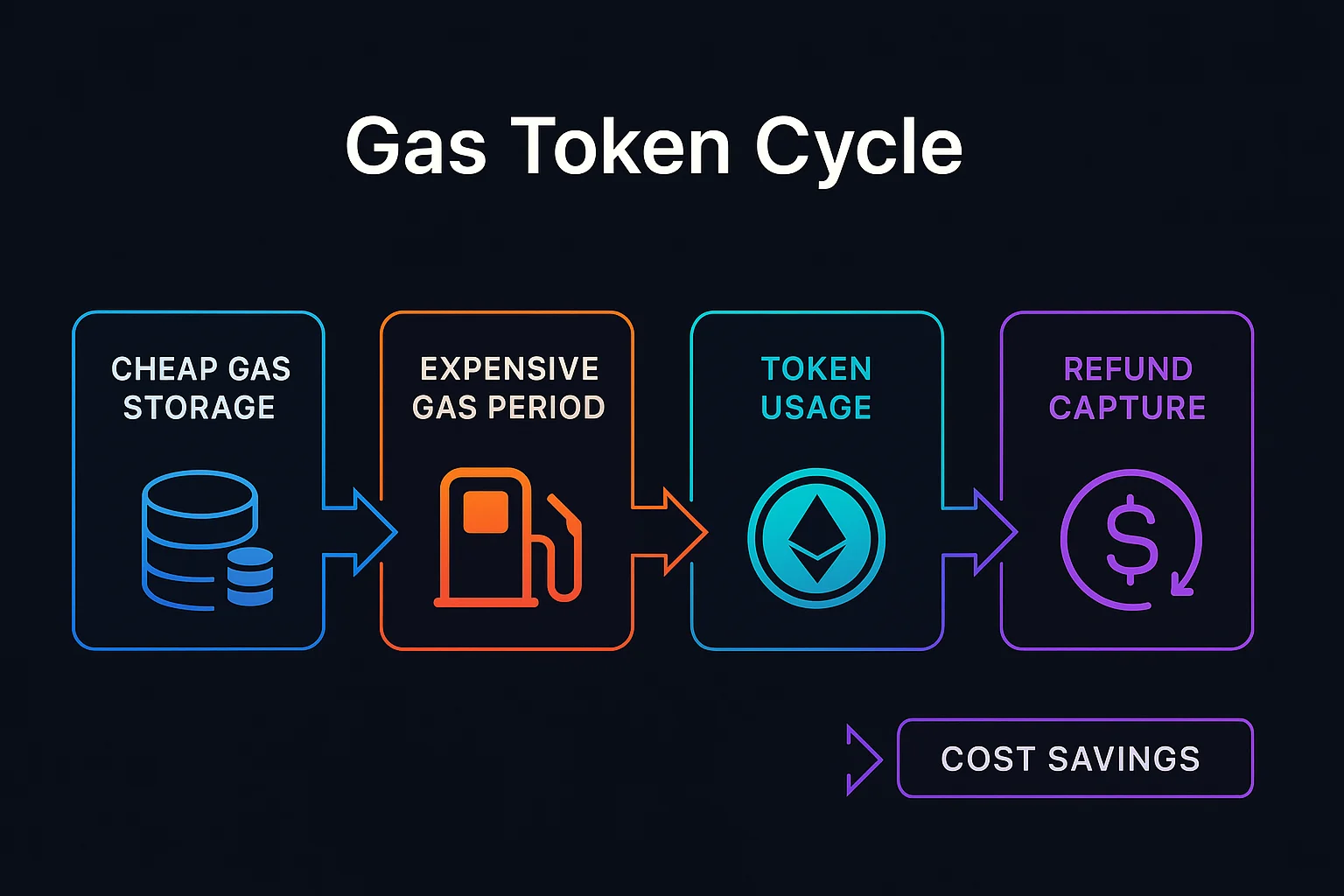Gas Token
Gas Token: Optimizing Transaction Costs
Gas tokens store cheap gas for later use when network fees are high. It’s like buying gasoline when prices are low and using it when prices spike.
A gas token is a cryptocurrency designed to optimize transaction costs by storing cheap gas during low-demand periods for use when fees are expensive. These tokens exploit gas refund mechanisms to provide cost savings.
How Gas Tokens Work
Storage optimization involves executing transactions that store data when gas is cheap, then clearing that storage when gas is expensive to receive refunds.
Arbitrage mechanism captures value from gas price differences over time, allowing users to effectively “buy” gas at low prices for future use.
Refund exploitation uses Ethereum’s gas refund system where clearing storage returns gas to transaction senders, reducing effective transaction costs.

Real-World Examples
- CHI token was designed specifically for gas optimization before EIP-3529 limited its effectiveness
- GST2 provided gas savings through storage manipulation strategies
- Various DeFi protocols have integrated gas optimization mechanisms into their operations
Why Beginners Should Care
Cost optimization strategies for regular DeFi users who can save significant amounts during high gas fee periods.
Technical complexity requires understanding gas mechanics and optimal usage timing to achieve meaningful savings.
Reduced effectiveness after Ethereum upgrades that limited gas refund mechanisms, making historical gas tokens less useful.
Related Terms: Gas Fees, Gas Optimization, Storage Refund, Transaction Cost
